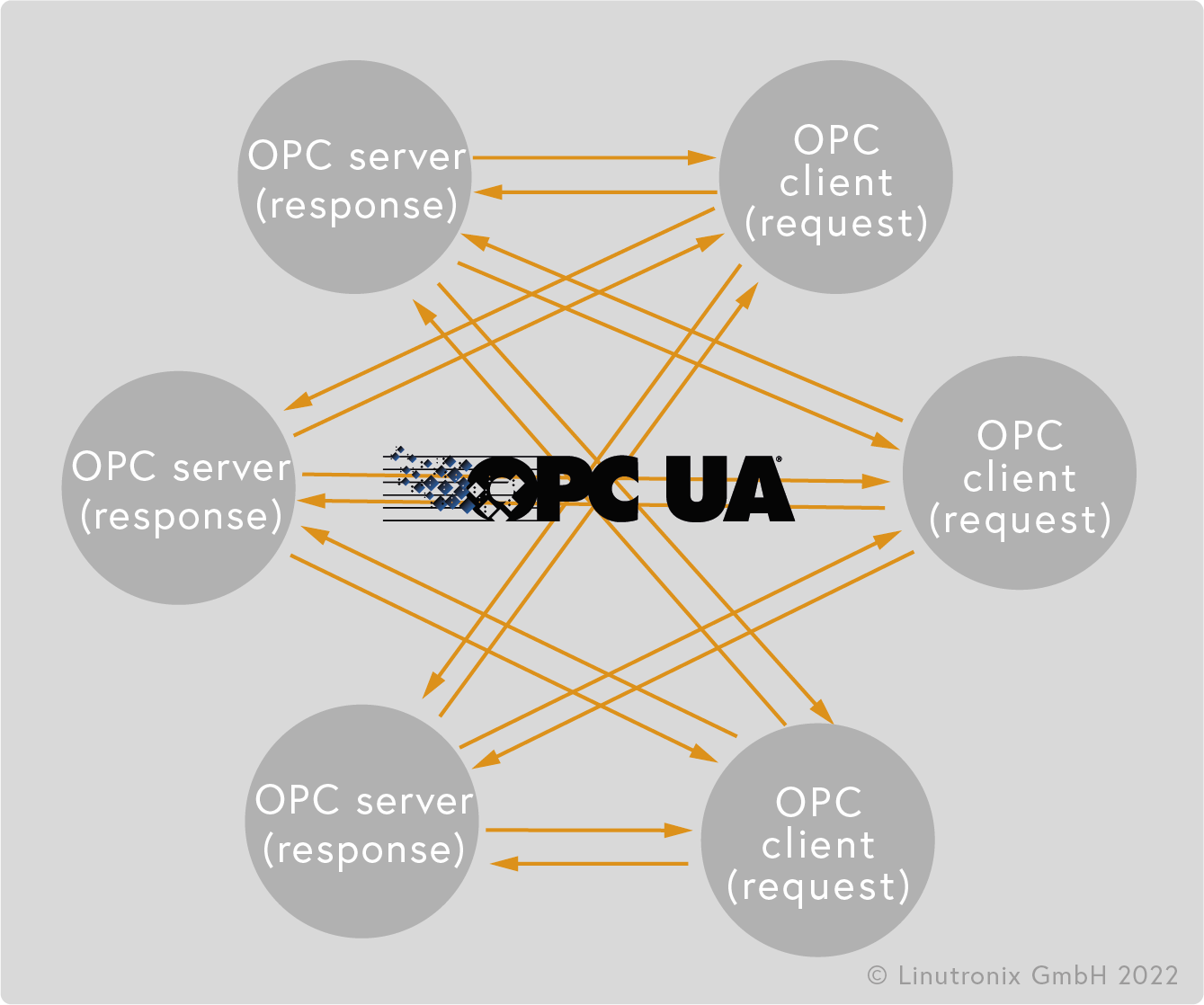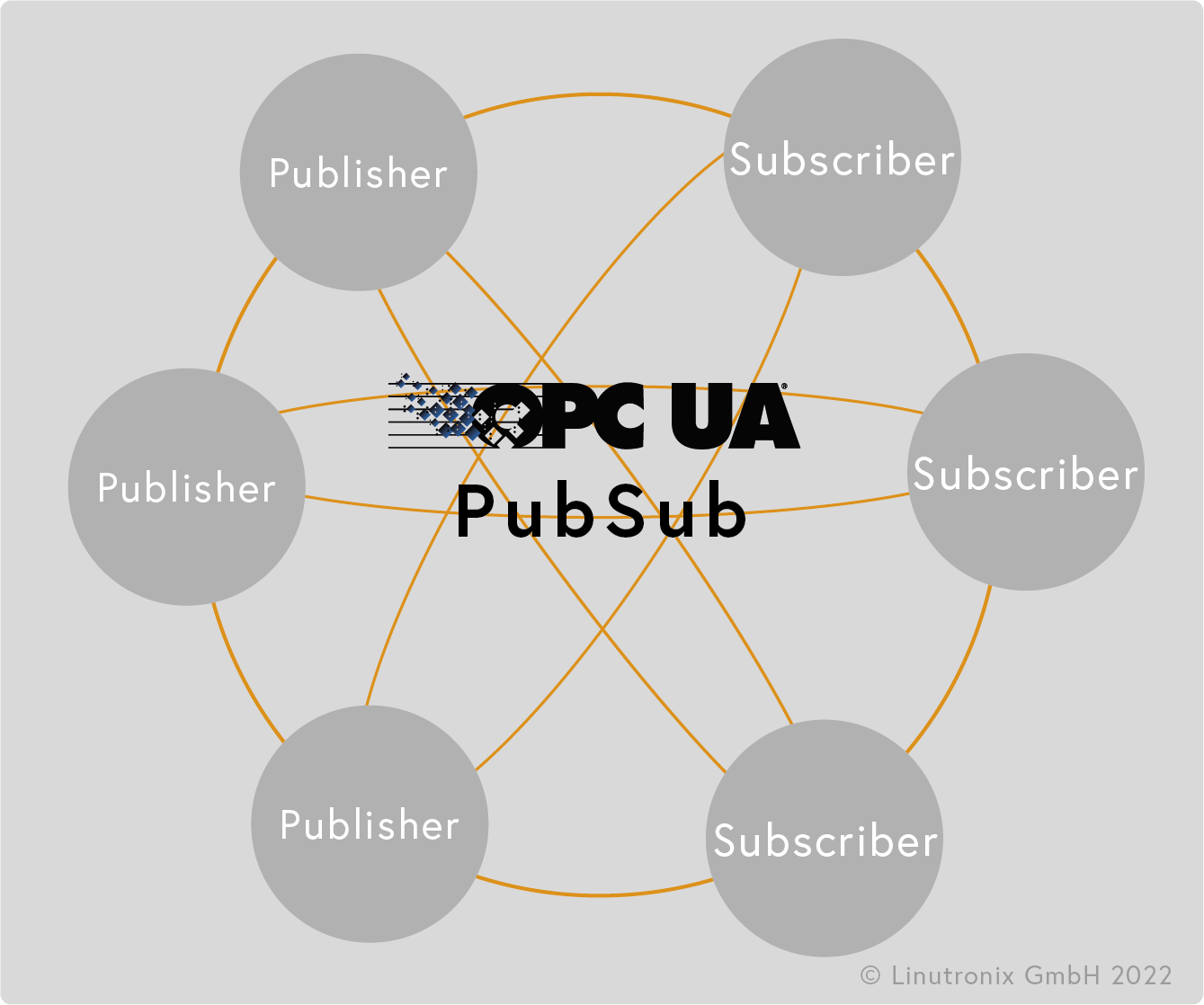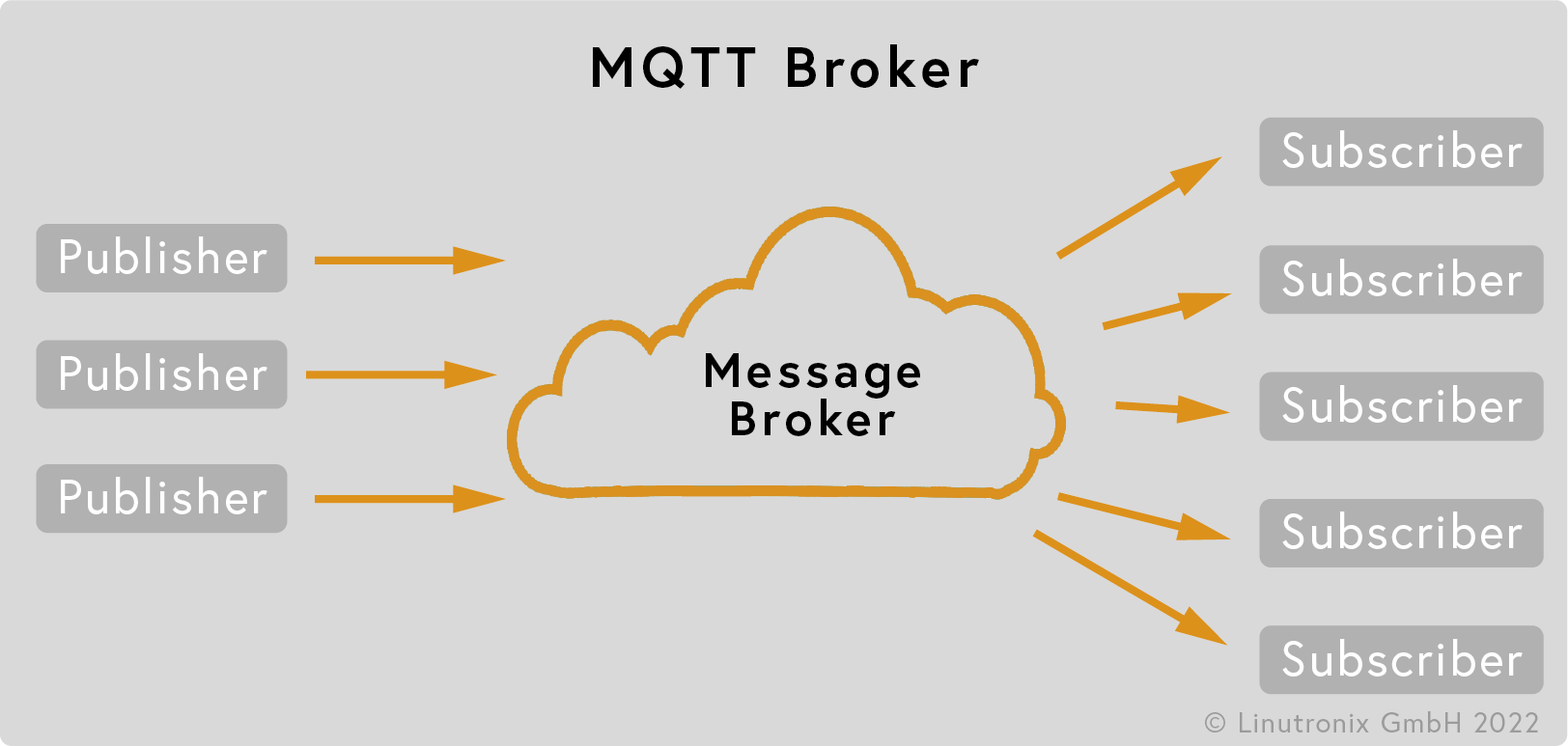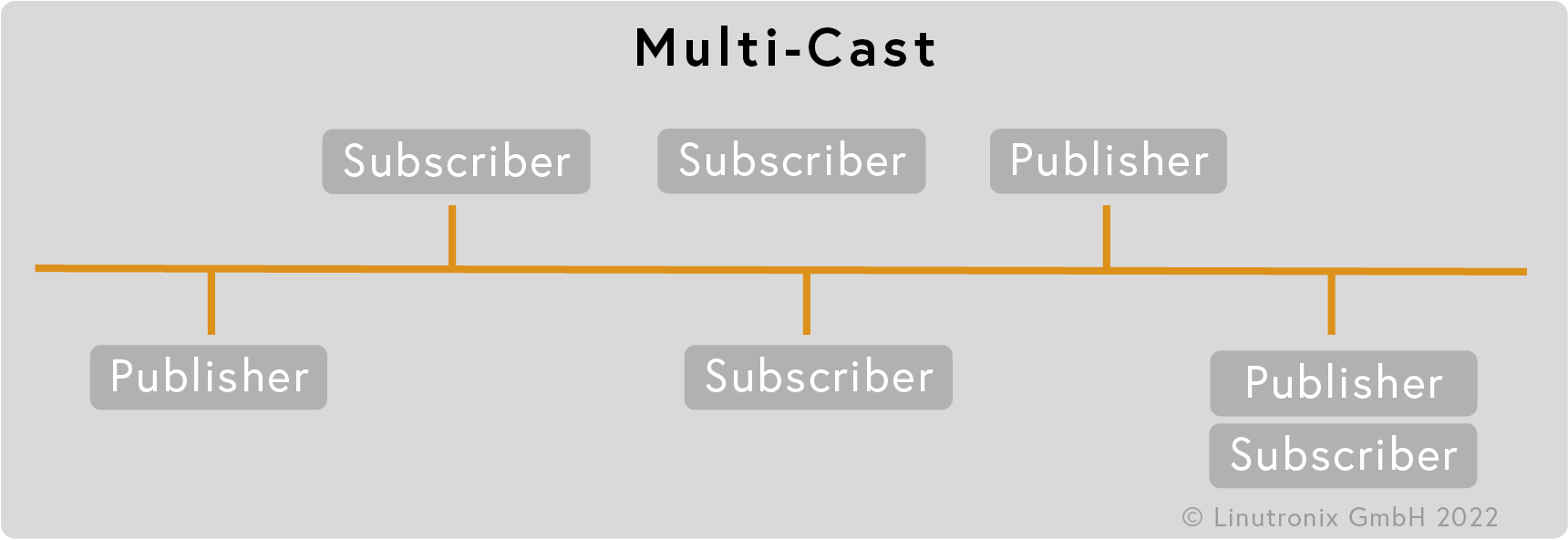Industrial linux
Now it's real(ly) time!

Industrial linux
Now it's real(ly) time!

 OPC UA is the new information and communication standard (ICT) for industrial automation. The most important difference to the fieldbuses mainly used so far is the powerful semantics of this protocol and the independent modelling of the communication relationships. OPC UA enables the browsing of existing devices, functions such as Read /Write and the calling of methods. OPC UA is independent of manufacturers and has inherent data security. An evaluation conducted by the German Federal Office for Information Security (BSI) in 2015 regarding the specified security functions confirmed that OPC UA was developed with security functions in mind and that there are no systematic errors (see also www.bsi.bund.de ).
OPC UA is the new information and communication standard (ICT) for industrial automation. The most important difference to the fieldbuses mainly used so far is the powerful semantics of this protocol and the independent modelling of the communication relationships. OPC UA enables the browsing of existing devices, functions such as Read /Write and the calling of methods. OPC UA is independent of manufacturers and has inherent data security. An evaluation conducted by the German Federal Office for Information Security (BSI) in 2015 regarding the specified security functions confirmed that OPC UA was developed with security functions in mind and that there are no systematic errors (see also www.bsi.bund.de ).
Usually an OPC UA client has a function called LDS (local discovery server). This function can be used to search the network for available OPC UA servers. During the subsequent connection configuration, the quality of the connection with regard to data security can be automatically defined depending on the device. Further configuration is also automated, as the scope of functions, data structure, procedures, etc. can be scanned thanks to OPC UA.
Access to the devices can be authenticated and authorised by means of a certificate (X.509), for example. Messages can then be encrypted and signed in this environment.
 OPC UA does not necessarily define the transmission technology in use and can therefore be operated on a wide variety of physical media. While until recently OPC UA only supported a client / server architecture, in which the client can retrieve and process data from the server, a point-to-many communication is now possible with the definition of Pub/Sub (Publisher / Subscriber). With Pub/Sub, the Publisher sends a message, regardless of whether there are one, two or many recipients. The message can be sent cyclically or event-driven, i.e. only when the data situation changes.
OPC UA does not necessarily define the transmission technology in use and can therefore be operated on a wide variety of physical media. While until recently OPC UA only supported a client / server architecture, in which the client can retrieve and process data from the server, a point-to-many communication is now possible with the definition of Pub/Sub (Publisher / Subscriber). With Pub/Sub, the Publisher sends a message, regardless of whether there are one, two or many recipients. The message can be sent cyclically or event-driven, i.e. only when the data situation changes.


Pub/Sub, together with the underlying transport layers, e.g. Ethernet with TSN, enables realtime capable communication. Here, realtime capability is to be understood as deterministic communication in the ≤ microsecond range (depending on the hardware used).
OPC UA Pub/Sub in combination with MQTT enables direct connection to cloud platforms such as MS Azure or Google. This is further simplified by the use of a JSON mapping, which is part of the OPC UA PubSub standard.


OPC UA has been standardised as IEC 62541. And open62541 is the name of the only open source implementation of the standard, including the Pub/Sub approach, implemented entirely in C.
 In autumn 2019, a server built with OPC UA, including the " Micro Embedded Device Server" profile of the OPC Foundation (i.e. with subscriptions, method calls and encryption), was certified by the very same.
In autumn 2019, a server built with OPC UA, including the " Micro Embedded Device Server" profile of the OPC Foundation (i.e. with subscriptions, method calls and encryption), was certified by the very same.
open62541 also supports the Pub/Sub model, but certification was not yet possible due to the lack of corresponding test regulations.
The development of the open62541 stack was also supported and promoted by Linutronix as part of an OSADL (www.osadl.org) project.
Due to the required realtime capability, PubSub communication is based on UDP and this enables lean and thus hard realtime capable stacks. In combination with the Time Sensitive Network (TSN) additions to Ethernet (IEEE 802.3), standardised, open communication solutions between sensors, actuators and controllers from different manufacturers can be realised without proprietary components.
| However, UDP has no provisions for securing data transmission. This must be done by the higher layers of the protocol used. |
 Linutronix participates in the Industrial Internet Consortium Testbed for TSN, which is located at the ISW of the University of Stuttgart. The task and goal of the testbed is to ensure that the devices are compatible among each other. For this purpose, simple use cases and data types have been defined, which are exchanged via TSN using OPC UA Pub/Sub, whereby the implementation is left to the participants in the testbed.
Linutronix participates in the Industrial Internet Consortium Testbed for TSN, which is located at the ISW of the University of Stuttgart. The task and goal of the testbed is to ensure that the devices are compatible among each other. For this purpose, simple use cases and data types have been defined, which are exchanged via TSN using OPC UA Pub/Sub, whereby the implementation is left to the participants in the testbed.
OPC Foundation has established an initiative called Field Level Communication to increase the acceptance and dissemination of the standard. Many well-known manufacturers of control and automation devices are members there and are driving development forward.
In parallel, there is the 60802 group under the umbrella of IEC/IEEE, which is developing a profile for TSN for industrial automation (TSN-IA profile). Both groups are working closely together to be able to offer a manufacturer-independent, universal TSN solution for industry.
We at Linutronix will be happy to advise you on the use and possibilities of OPC UA including Pub/Sub and the various transport protocols.